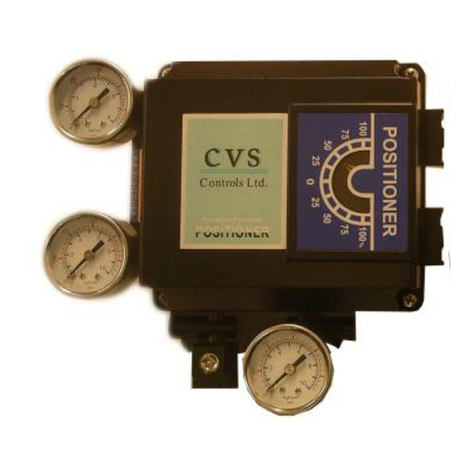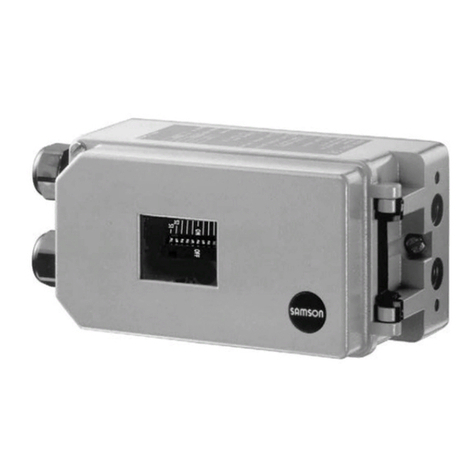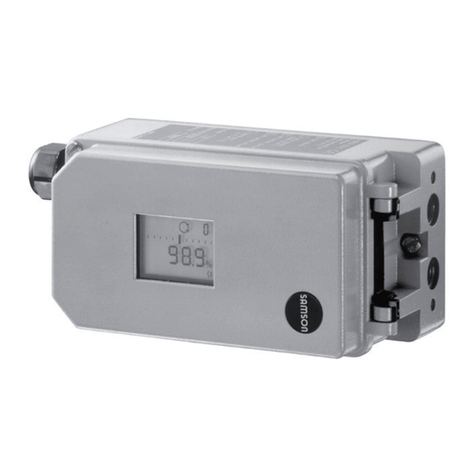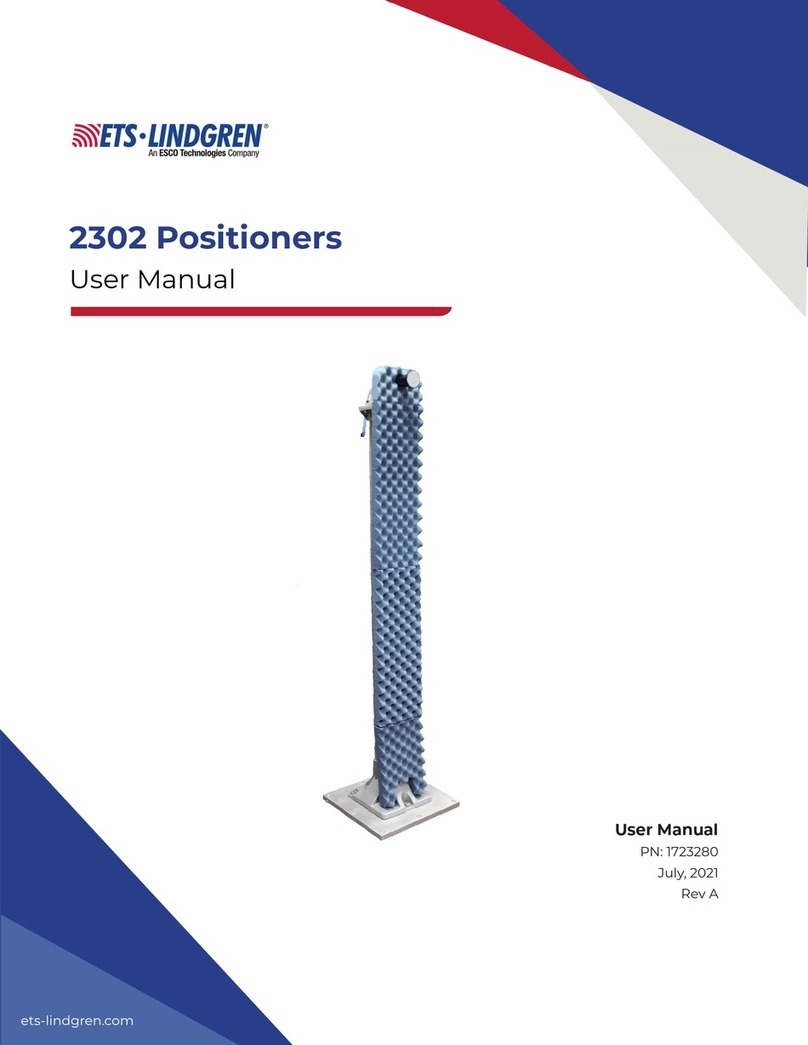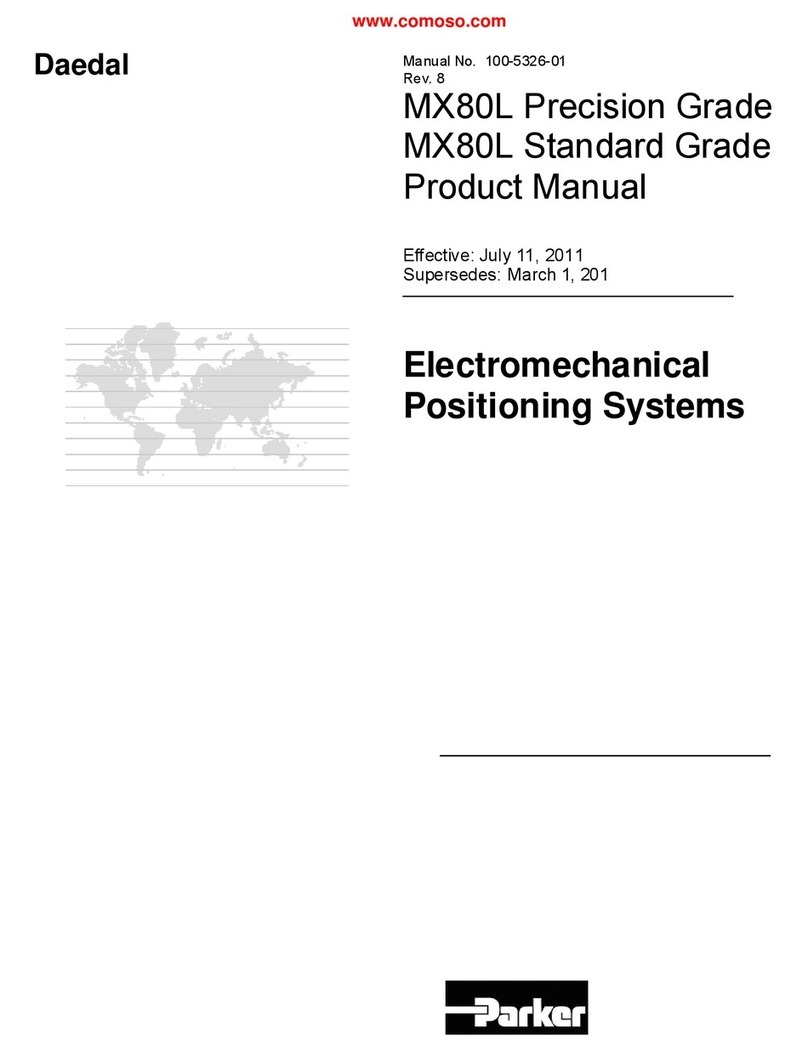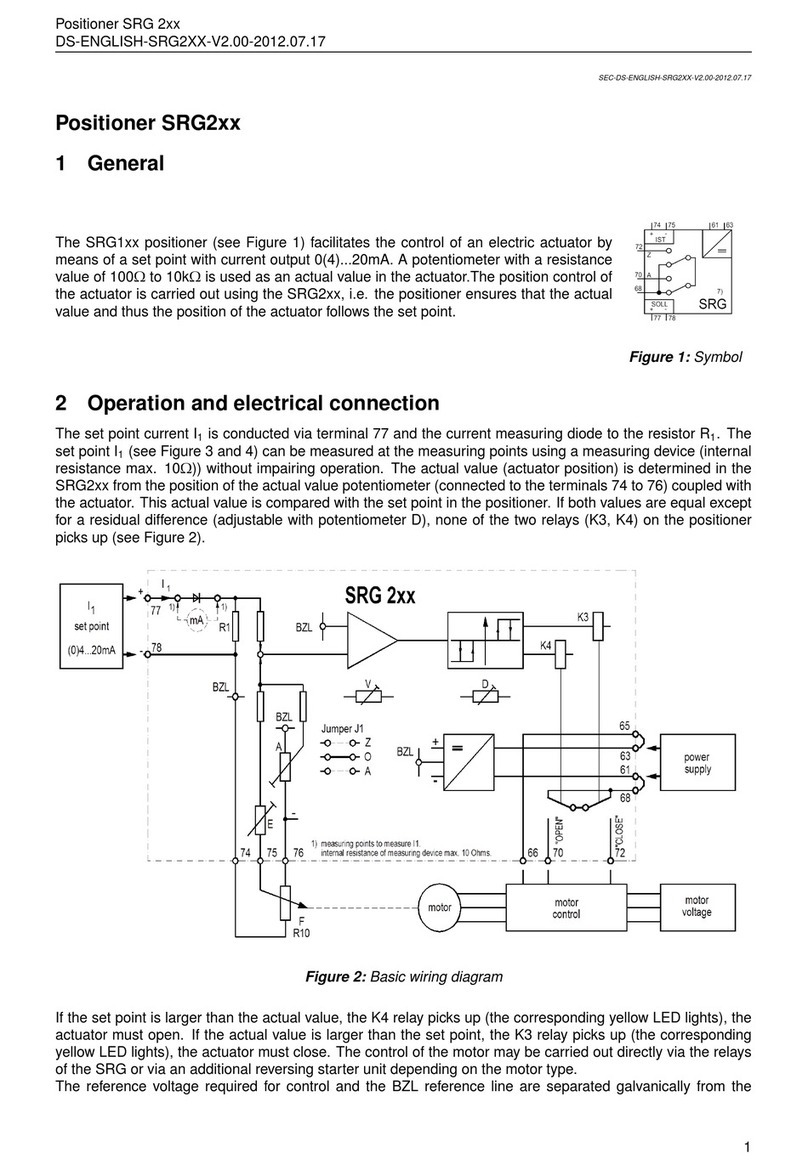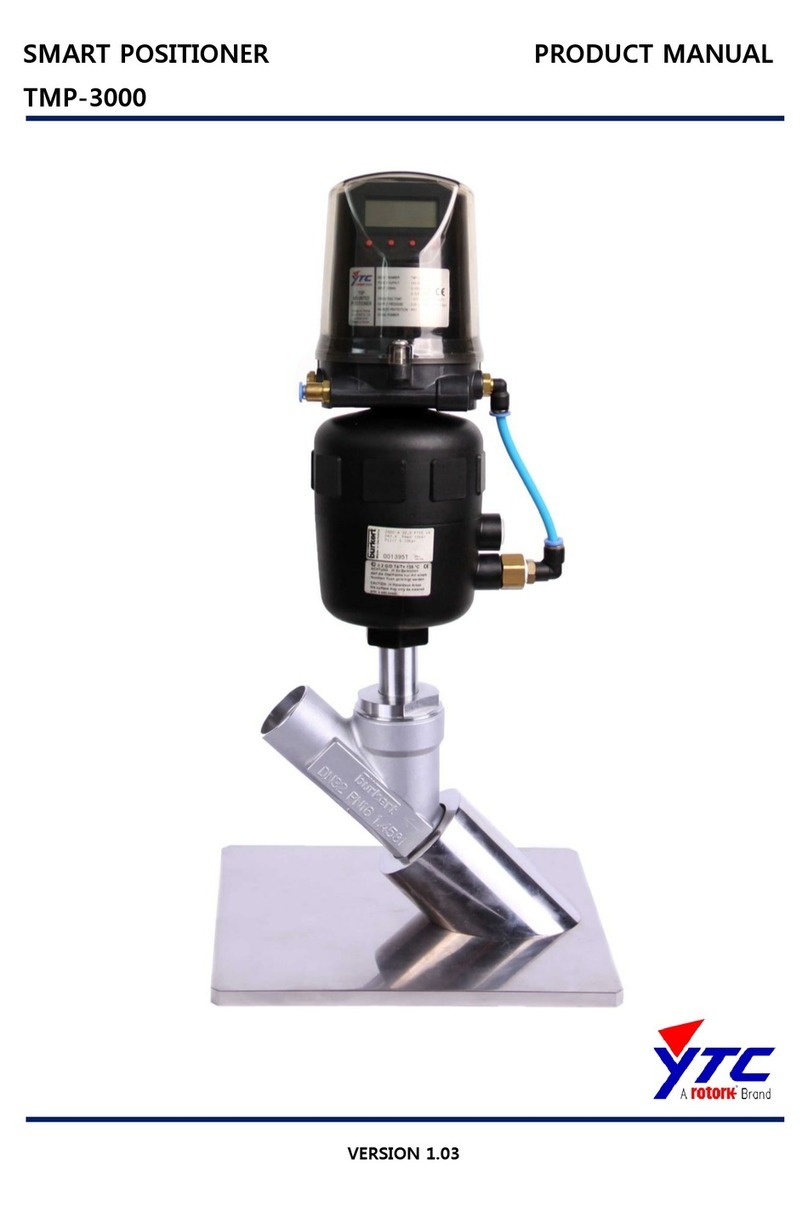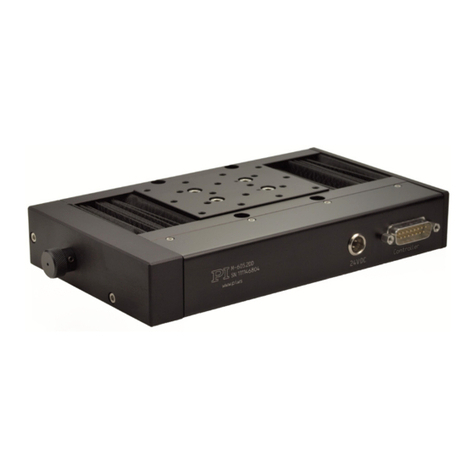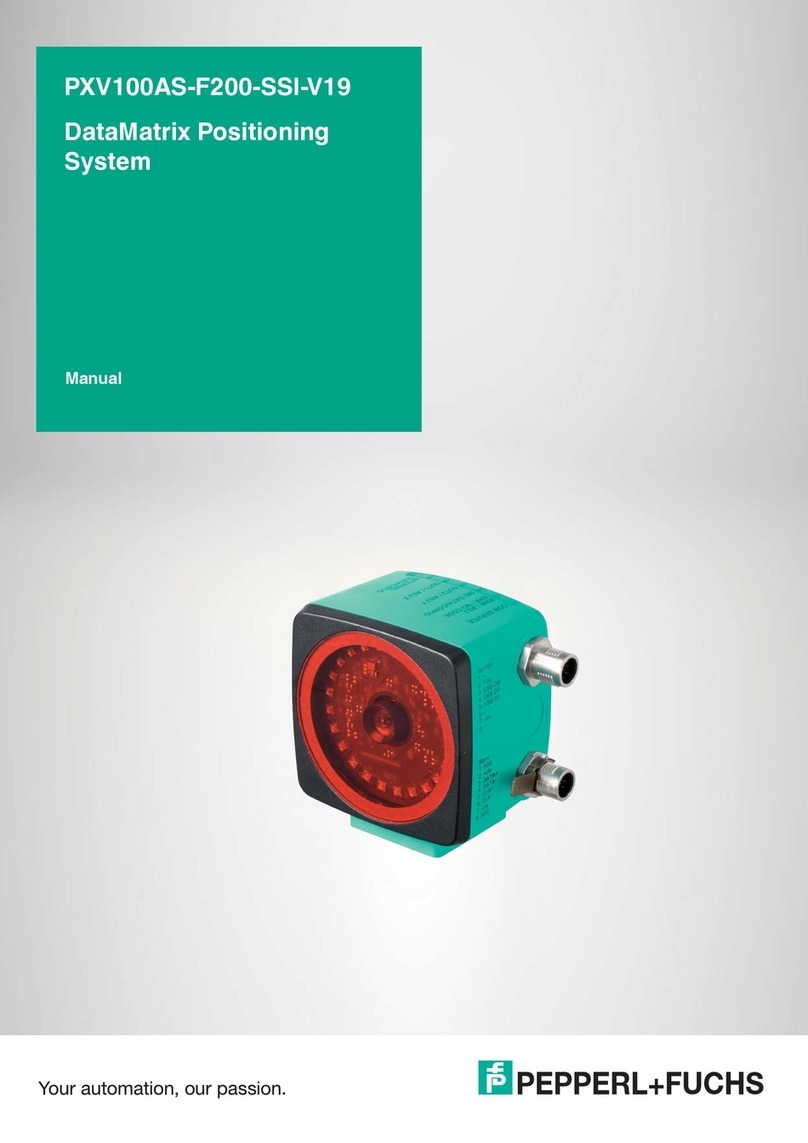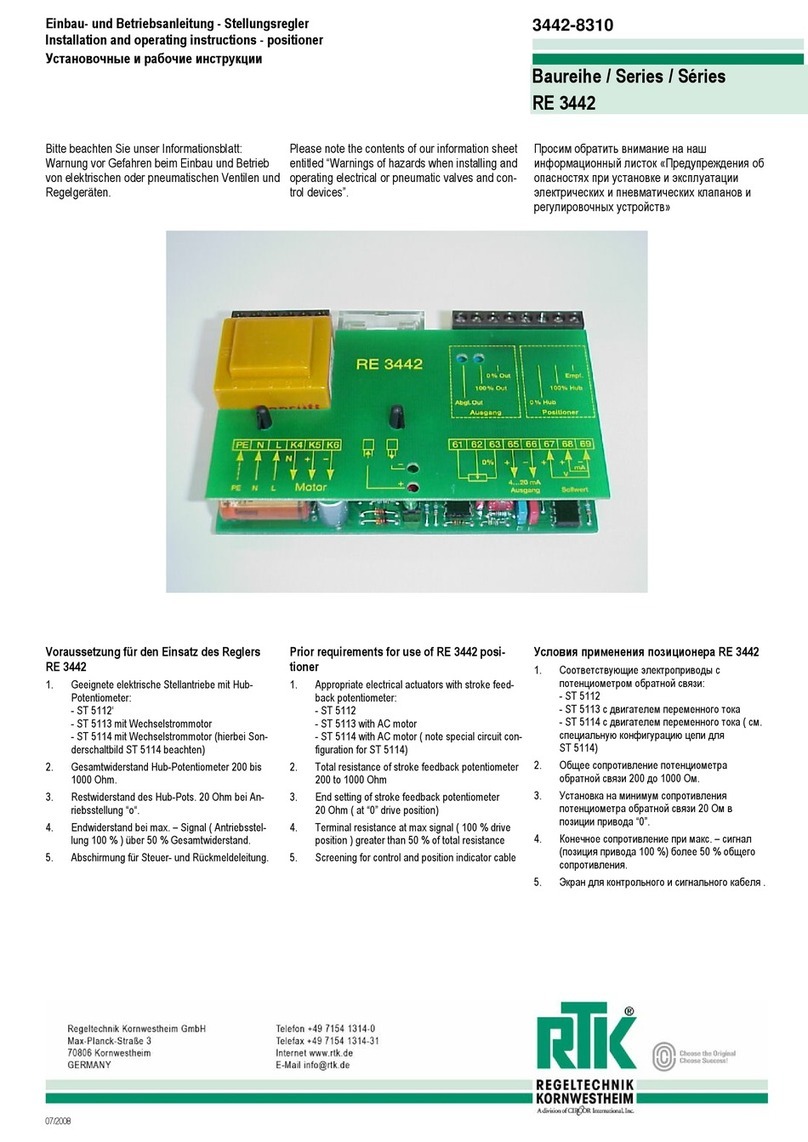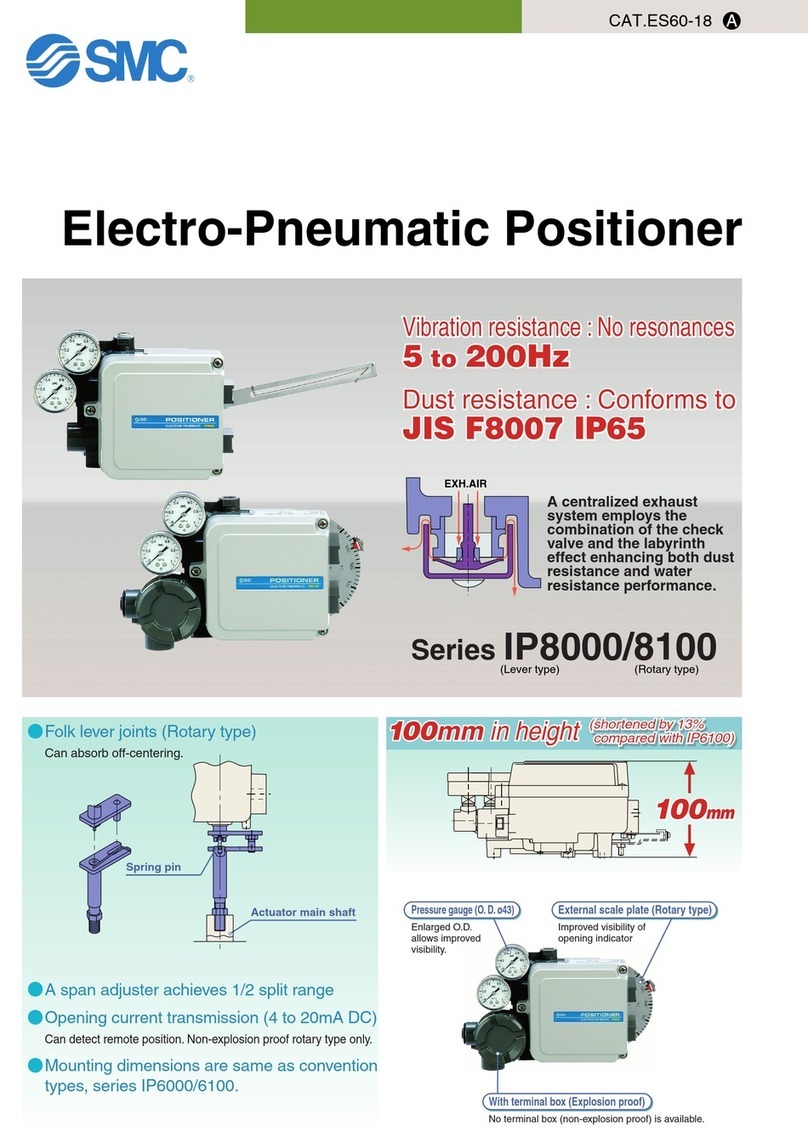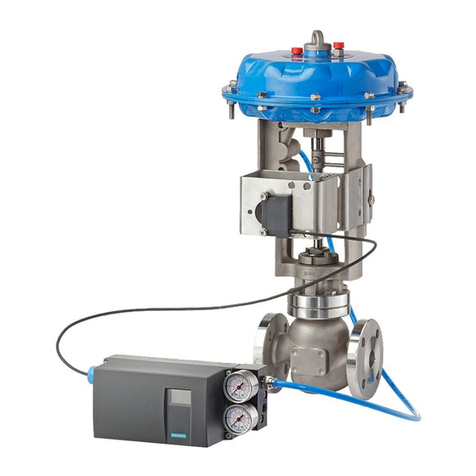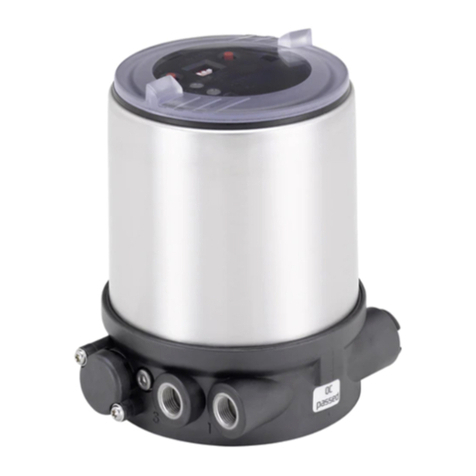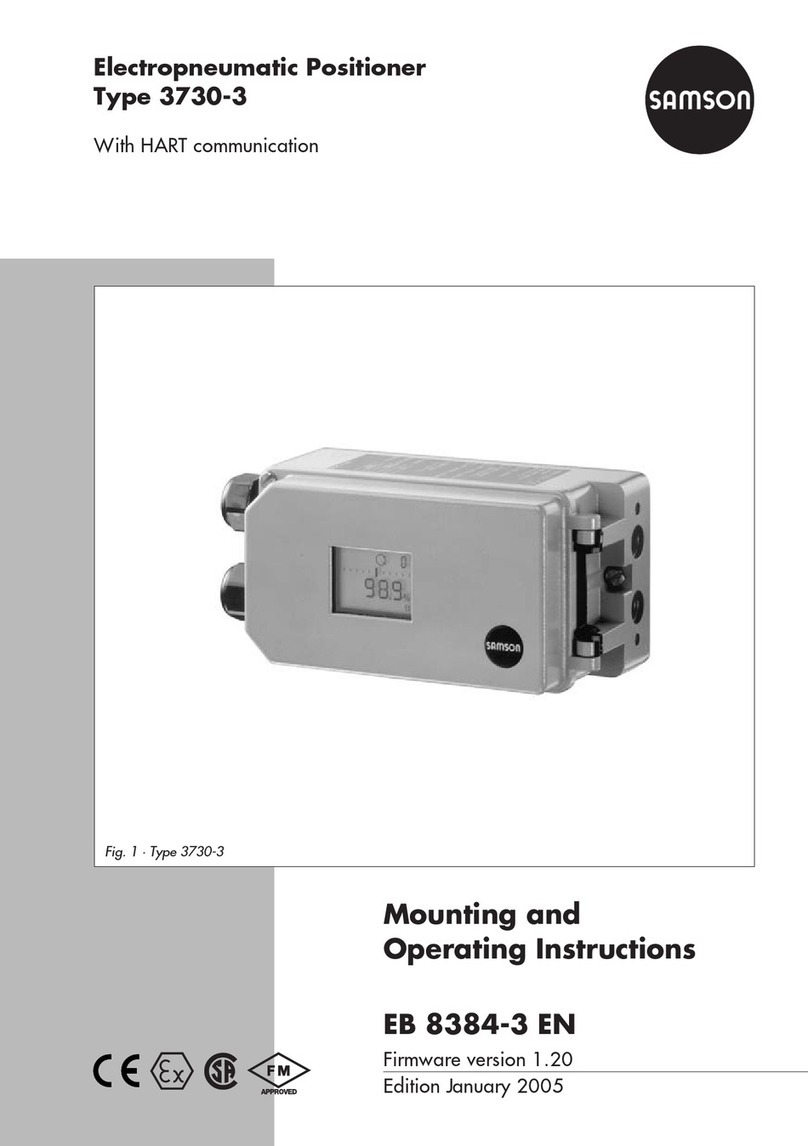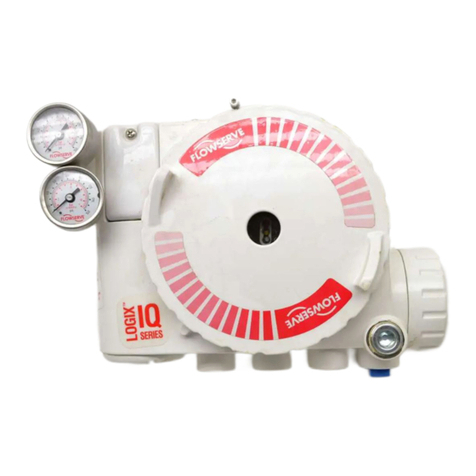
Positioner SRG 5xx
DS-ENGLISH-SRG5XX-V2.00-2012.07.17 5 Technical datan
Filter V:
The filter type used is a phase-zero filter. This filter limits the increase speed of the control deviation. The
effect of disturbances (high increase speed) is reduced effectively without impairing the control behaviour.
ATTENTION! A too large filter effect will cause the actuator to oscillate.
The filter effect is reduced by turning the potentiometer V in a clockwise direction.
Adjustment procedure:
Adjust actuator according to operating instructions for the actuator. Set filter effect to minimum position by
turning potentiometer V in a clockwise direction.
Initial value: Feed 0V (terminals 77 (plus) and 78 (minus)) at voltage input. The actuator moves into final po-
sition "CLOSED" and is switched off via microswitches S1 (torque depending closing) or S3 (travel depending
closing). Turn potentiometer A on SRG in clockwise direction until relay K3 is released (can be seen on light
emitting diode).
Final value with set point 0...10V: Feed 10V (terminal 77 (plus) and terminal 78 (minus) at voltage input.
The actuator moves in direction "OPEN" and the travel switch S4 (travel depending opening) and torque switch
S2 (torque depending opening) should switch. If S4 or S2 have not already switched, turn potentiometer E in
clockwise direction until S4 or S2 responds and relay K4 remains picked up. Then turn potentiometer E slowly
in counter-clockwise direction until relay K4 is released and K3 does not pick up yet.
Final value at set point 2...10V: Feed 8V (terminal 77 (plus) and terminal 78 (minus) at set point input. The
actuator moves in direction "OPEN" and the travel switch S4 (travel depending opening) and torque switch
S2 (torque depending opening) should switch. If S4 or S2 have not already switched, turn potentiometer E in
clockwise direction until S4 or S2 responds and relay K4 is released. Increase set point to 10V, K4 picks up.
Turn potentiometer A in counter-clockwise direction until relay K4 is released and K3 does not pick up yet.
Control and correction of adjustment:
Initial value: Feed minimum set point (0 or 2V). The actuator moves into final position "CLOSED". If S3
or S1 switches and K3 remains picked up, turn potentiometer A in clockwise direction until K3 is released
and K4 does not pick up yet. If K3 is released and S3 or S1 has not switched yet, turn potentiometer A in
counter-clockwise direction until S3 or S1 switches. If K3 remains picked up, turn potentiometer A in clockwise
direction until K3 is released and K4 does not pick up yet.
Final value: Feed set point 10V. The actuator moves into final position "OPEN". If S4 or S2 switches and K4
remains picked up, turn potentiometer E in counter-clockwise direction until K4 is released and K3 does not
pick up yet. If K4 is released and S3 or S1 has not switched yet, turn potentiometer E in clockwise direction
until S3 or S1 switches. If K4 remains picked up, turn potentiometer E in counter-clockwise direction until K4 is
released and K3 does not pick up yet.
Finally, determine the optimum adjustment of the switching difference with set point steps. When turning po-
tentiometer D in a counter-clockwise direction, the switching difference is increased. The set point steps should
be in the opposite direction (reverse clearance) and their magnitude selected so that the actuator is able to
reach its set point speed.
Then the filter effect can be increased to the desired stability reserve again by turning potentiometer V in
a counter-clockwise direction.
5 Technical datan
Supply voltage:
SRG21X ................................................220V AC,+10%/-15%,47...63 Hz
SRG22X ................................................20...30VDC, smoothed;(+...63, -...61)
SRG23X.................................................110VAC, +10%/ -15%, 47...63Hz
Power consumption ............................................approx. 1,5VA
Ambienttemperature ...........................................-20...+60◦C
Setpointsignal .................................................0(2)...10 V
Actualvalue potentiometer .....................................100Ω. . . 10kΩ
Switchingdifference ............................................0,5...5%offinalvalue
Hysteresis ......................................................approx. 25%ofswitching difference
Relay:
Switchingcapacity .......................................4A,250VAC1
Mechanicallife ...........................................20 mill. cycles
3
